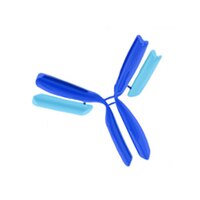GR37 Sigma-AldrichAnti-Vitamin D Receptor (Ab-1) Rat mAb (9A7γE10.4)
This Anti-Vitamin D Receptor (Ab-1) Rat mAb (9A7γE10.4) is validated for use in Frozen Sections, Gel Shift, WB, IP, Paraffin Sections for the detection of Vitamin D Receptor (Ab-1).
More>> This Anti-Vitamin D Receptor (Ab-1) Rat mAb (9A7γE10.4) is validated for use in Frozen Sections, Gel Shift, WB, IP, Paraffin Sections for the detection of Vitamin D Receptor (Ab-1). Less<<Prodotti consigliati
Panoramica
| Replacement Information |
|---|
Tabella delle specifiche principali
| Species Reactivity | Host | Antibody Type |
|---|---|---|
| Am, Ch, Ht, H, M, Porcine, R | R | Monoclonal Antibody |
Prezzi e disponibilità
| Numero di catalogo | Disponibilità | Confezionamento | Qtà/conf | Prezzo | Quantità | |
|---|---|---|---|---|---|---|
| GR37-100UG |
|
Fiala di plastica | 100 μg |
|
— |
| Description | |
|---|---|
| Overview | Recognizes both occupied and unoccupied vitamin D receptor in breast carcinomas expressing the vitamin D receptor protein. |
| Catalogue Number | GR37 |
| Brand Family | Calbiochem® |
| Product Information | |
|---|---|
| Form | Liquid |
| Formulation | In 10 mM PBS, 0.2% BSA, pH 7.4. |
| Positive control | Breast carcinoma tissue (see comments) |
| Preservative | ≤0.1% sodium azide |
| Quality Level | MQ100 |
| Physicochemical Information |
|---|
| Dimensions |
|---|
| Materials Information |
|---|
| Toxicological Information |
|---|
| Safety Information according to GHS |
|---|
| Safety Information |
|---|
| Product Usage Statements |
|---|
| Packaging Information |
|---|
| Transport Information |
|---|
| Supplemental Information |
|---|
| Specifications |
|---|
| Global Trade Item Number | |
|---|---|
| Numero di catalogo | GTIN |
| GR37-100UG | 04055977228311 |
Documentation
Anti-Vitamin D Receptor (Ab-1) Rat mAb (9A7γE10.4) MSDS
| Titolo |
|---|
Anti-Vitamin D Receptor (Ab-1) Rat mAb (9A7γE10.4) Certificati d'Analisi
| Titolo | Numero di lotto |
|---|---|
| GR37 |
Riferimenti bibliografici
| Panoramica delle referenze |
|---|
| Brown, A.J. 1999. Nephrol. Dial. Transplant. 14, 11. Fleet, J.C. 1999. Nutr. Rev. 57 60. Evans, S.R., et al. 1998. Clin. Cancer Res. 4, 1591. Friedrich, M., et al. 1998. J. Histochem. Cytochem. 46, 1335. Issa, L.L., et al. 1998. Inflamm. Res. 47, 451. Kivineva, M., et al. 1998. J. Steroid Biochem. Mol. Biol. 66, 121. Nangia, A.K., et al. 1998. J. Steroid Biochem. Mol. Biol. 66, 241. |
Citazioni
| Titolo | |
|---|---|
|
|
| Scheda tecnica | ||||||||||||||||||||||||||||||||||||||||||||
|---|---|---|---|---|---|---|---|---|---|---|---|---|---|---|---|---|---|---|---|---|---|---|---|---|---|---|---|---|---|---|---|---|---|---|---|---|---|---|---|---|---|---|---|---|
|
Note that this data sheet is not lot-specific and is representative of the current specifications for this product. Please consult the vial label and the certificate of analysis for information on specific lots. Also note that shipping conditions may differ from storage conditions.
|







